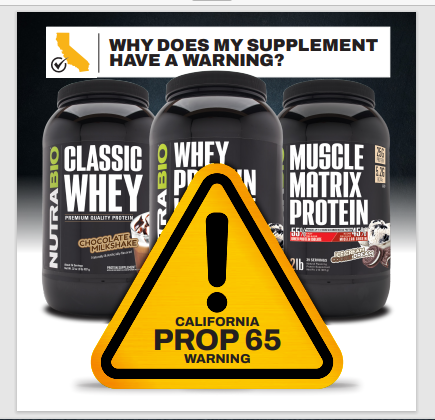
Your diet could impact race-day performance
If you’re an endurance athlete, you know about gastrointestinal (GI) distress. Stomach cramps, nausea, pain, bloating, and even vomiting--it’s all par for the course when you’re at your max during an event or tough training day.
It’s also possible that you’ve noticed your symptoms are affected by your last meal.
The authors of a new study published in the Journal of the International Society of Sports Nutrition argue that GI symptoms are often ignored in nutrition recommendations, despite their prevalence in endurance athletes.
So let’s dive into the relationship between GI distress and the foods we eat.
Why does exercise exacerbate GI distress?
A few things are happening in your body during exercise that can increase GI distress.
- For one, your sympathetic nervous system (part of the autonomic nervous system) activates, which moves blood away from the digestive system to other organs, interferes with the regular contractions of the digestive tract muscles, and decreases the secretions needed for digestion.
- Secondly, exercise can lead to intestinal ischemia, which compromises the integrity of the epithelial (skin) lining of the intestines, thereby increasing permeability. As you can imagine, a permeable gut isn’t great--your intestines hold a lot of bacteria. (Costa, et al.)
- Third, high-intensity exercise may decrease gastric motility and emptying (aka make you constipated). (Costa, et al.) (Clark, et al)
This confluence of physiological responses makes it hard for your gut to absorb nutrition, which means that you will feel lackluster and unenergetic. (Not to mention, you’ll be gassy and uncomfortable.)
How can I decrease GI distress?

What you eat can either aggravate the symptoms of the three responses listed above or lessen them. But as Parnell, et al. points out, so far we haven’t learned much about which foods to avoid before competitive exercise.
Researchers gave a questionnaire to 388 runners to assess diet and its relationship to GI symptoms, which included the following information:
Demographics- Including sex, age, etc.
- To examine variation in response based on competitiveness/fitness
- To ensure medical conditions did not influence the results of the questionnaire
Voluntary food restrictions
- To look for trends in restrictions
- To examine the kinds of GI symptoms most commonly reported
Researchers learned that stomach cramps were the most common problem, with over 40% of athletes reporting cramps or pain.
- Stomach pain/cramps (42%)
- Intestinal pain/discomfort (23%)
- Side ache/stitch (22%)
- Urge to defecate (22%)
- Bloating (20%)
Many athletes claimed to avoid meat, milk and dairy, and high-fiber foods before a big event, with meat and milk topping the list. Here’s how the categories broke down:
- Meat (32%)
- Milk products (31%)
- Fish/seafood (28%)
- Poultry (24%)
- High-fiber foods (23%)
In addition, researchers made the following observations:
- The prevalence of GI symptoms was higher in young athletes, especially females.
- Recreational athletes were less likely to report GI symptoms.
- Runners avoided caffeinated beverages in events of10 km or less.
- Female athletes who avoided high-fiber foods increased overall running distance.
- Young and competitive runners were more likely to avoid certain foods. (Parnell, et al.)
While this questionnaire is limited, it does offer some insight for athletes struggling with GI distress.
Consider eliminating one food group identified in the study before your next race. If that doesn’t help, try another food group.
For example, avoid meat products before your next event. Next, try eliminating dairy or high-fiber foods from your pre-workout nutritional routine.
About The Author:
Matt Mosman (MS, CISSN, CSCS) is a research scientist, endurance athlete, and the founder and Chief Endurance Officer at EndurElite. Matt holds his B.S. in Exercise Science from Creighton University and his M.S. in Exercise Physiology from the University of California. Matt and his family reside in Spearfish South Dakota, where they enjoy running, mountain biking, camping, and all the outdoor adventures Spearfish has to offer.
References:
- Costa RJS, Snipe RMJ, Kitic CM, Gibson PR. Systematic review: exercise-induced gastrointestinal syndrome—implications for health and intestinal disease. Aliment Pharmacol Ther. 2017. https://doi.org/10.1111/apt.14157.
- Costa RJS, Hoffman MD, Stellingwerff T. Considerations for ultra-endurance activities: part 1- nutrition. Res Sport Med. 2019. https://doi.org/10.1080/15438627.2018.1502188.
- Clark A, Mach N. Exercise-induced stress behavior, gut-microbiota-brain axis and diet: a systematic review for athletes. J Int Soc Sports Nutr. 2016. https://doi.org/10.1186/s12970-016-0155-6.
- Parnell, J.A., Wagner-Jones, K., Madden, R.F. et al. Dietary restrictions in endurance runners to mitigate exercise-induced gastrointestinal symptoms. J Int Soc Sports Nutr 17, 32 (2020). https://doi.org/10.1186/s12970-020-00361-w


